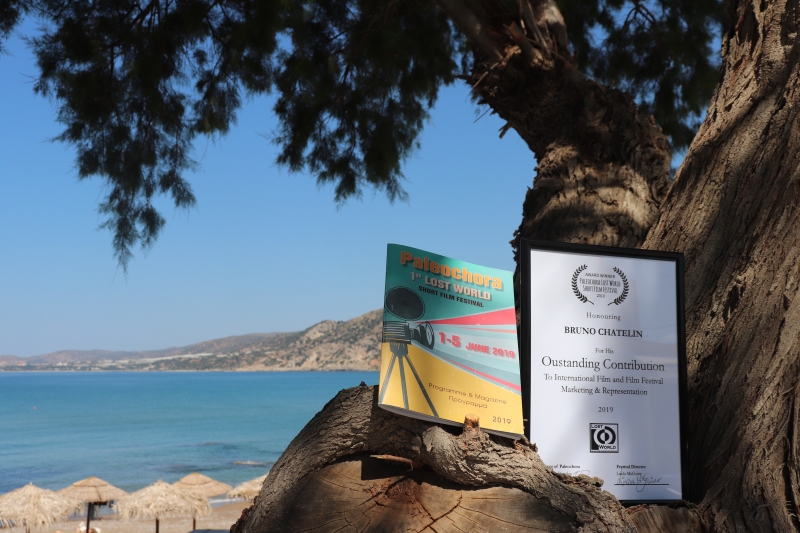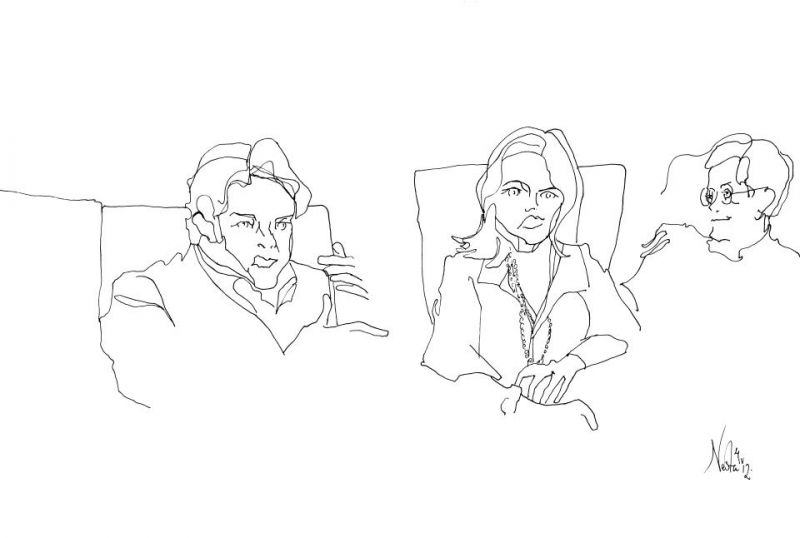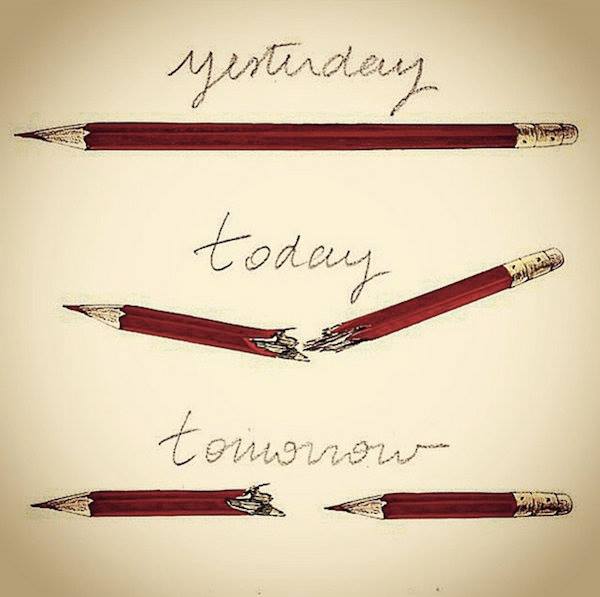The ADMC Digital Media Initiative
Responding to the Challenges of Digital Media for Multi-Platforms
Summary of the results of the workshop on February 1st, 2005 at AIC, Sophia-Antipolis, France
- The AIC Business Resort and the ADMC Cluster Initiative
- How to Get European Funding
- New Challenges for Satellite Broadcasting
- Convergence, a Broadcaster's Point of View
- Panel 1: New Platforms for Digital Broadcasting
What are the New Challenges? Which Content for Which Platform?
- Panel 2: New Models of Advertising and Digital Distribution
Brand Integration in Media Distribution and Partnership Models
- Panel 3: Standards, Digital Hubs and Market Relevance
Exploring the Business Models to Make Digital Content a Reality
The AIC Business Resort and the ADMC Cluster Initiative
Jean-Luc Nahon, CEO of Antipolis Innovation Campus (AIC), Malo Girod de l’Ain, CEO of Filmfestivals.com, Thierry Baujard, CEO of Peacefulfish, Stéphane Piernet, CEO of PierNet.TV
The workshop started with a presentation of the AIC business resort and of the ADMC cluster initiative.
As an innovative business real estate, AIC wishes to become the driving force for private initiatives in the field of media and telecommunication convergence on the French Riviera. To do so, AIC is building up on the strengths of both Sophia Antipolis, Europe’s foremost science and technology park in information technology, life sciences, environmental sciences and fine chemistry, and Cannes, one of the word’s first meeting points for the entertainment and the telecommunication industry. Furthermore, the small area between Cannes and Sophia-Antipolis has strong assets for test and validation of audience purposes thanks to its very interesting mix of 300.000 inhabitants with many nationalities, lots of engineers, young people as well as old people.
AIC is launching two cluster initiatives: the ADMC cluster which will focus on digital content for multi-platforms and the ADNT cluster focused on telecom and technology with a specific angle around triple play services (telephone/data/TV per XDSL).
Both clusters will be hosted at the AIC and will be able to use the various features of the business resort: private offices, 1 modular showroom, 1 conference hall, 5 audiovisual and conference rooms, highend connectivity, broadband Wifi, hosting capacities as well as 2 restaurants, 1 swimming pool, 1 fitness club.
The Antipolis Digital Media Cluster (ADMC) initiative aims to bring together all actors involved in digital media:
Platform operators and manufacturers as well as software companies faced with
the challenge of developing content offers and platform solutions corresponding to
customer needs and technical capacities
Content providers faced with the challenge of producing contents for the different platforms matching customer needs and capable of generating revenue
Regulatory, institutional and training players faced with the challenge of defining the frame and promoting the development of this new industry
Companies providing services and technical solutions connected to these three categories of players.
ADMC will provide its member companies with a strategic standpoint at the crossroads of development, marketing and sales.
Member companies will be able to syndicate equipment, projects, competences and capacities to:
test new contents, applications and services to assess the expectations and needs of users for the different platforms;
develop and validate standards for contents, applications and services for the various platforms;
showcase and communicate on their offer on site using ADMC international promotion as well as during all major festivals and trade shows of Cannes, Nice and Monaco.
Companies entering ADMC are joining into:
a place of creation and development of multiplatform digital content and solutions of unparalleled diversity and excellence in the world;
a thought-through structure designed to foster co-operation and exchanges between members, the syndication of capacities, access to financing, to European sponsored projects and to potential clients.
How to Get European Funding
Alain André, Managing Director of CICOM
Alain André, Managing Director of CICOM presented the detect-it.org initiative of the European Union which aims to stimulate the participation of Small and Medium-Sized Enterprises (SMEs) in Research and Technological Development (RTD) activities. The project involves 42 partners from 16 countries and over 1.000 SMEs
from across Europe. A particularly innovative element of DETECT-it is the participation and support of corporate leaders from the private sector.
DETECT-it is supported within the framework of the “Stepping up Economic and Technological Intelligence” actions of the Sixth Framework Programme of the European Commission. The target fields of research are
1) IST, 2) Food Safety and Quality, and 3) Environment and Energy.
One of the important aspects of the AIC is that next to the ADMC cluster
and the ADNT cluster, 3 entities will be created:
the “House of Employment” that will offer HR services to engineers and managers from Sophia Antipolis,
the “House of the Entrepreneur” that will support companies whishing to establish in Sophia Antipolis
the “House of Europe” which will offer its services to the members of the cluster to co-ordinate and initiate applications to European grants and contracts.
New Challenges for Satellite Broadcasting
Jean-Louis Oustrières, General Director, Divona Data Transfer (Monaco Telecom Group)
Based on the experience of his company, a major player in satellite broadcasting services, Mr Oustrières summed up the challenges facing content providers and satellite operators.
A real need for content exists on the side of satellite operators. This content has to be 1) able to be broadcasted in various formats, 2) cheap and 3) customizable to various markets (for instance in terms of language). A business model has to be found in order to finance these contents and generate revenues that can be distributed in a way that remunerates each stakeholder.
This is not a reality today. Mr Oustrières hopes that such initiatives as that of ADMC will succeed in finding new and creative ways to make this happen.
Convergence, a Broadcaster's Point of View
Rémi Tereszkiewicz, Media Consultant, Solago (peacefulfish Network)
Based on his experience at Eurosports and Monaco Telecom, Mr Tereszkiewicz presented the strategies of broadcasters to meet the challenges of the convergence
of media platforms.
Today, classical TV broadcasters are still profitable (60-70% of TF1’s revenues still come from advertising), but a revolution is on its way that will bring new parties
wanting a piece of the “advertising cake” which will not grow in the same proportions.
The newcomers will come from:
Terrestrial digital television (will be launched in most European countries between 2005 and 2007)
ADLS-TV
VOD and digital video players/recorders
DVBH and UMTS (mobile devices will ultimately become the new set up box)
These new players will be:
Broadcasters, aggregators, rights holders (content and brand owners)
Distributors,
Enablers, regulators
3 questions remain unanswered:
Who will control this evolution?
Which contents will be offered? To meet which needs?
Which revenues? Will this generate more revenues or rather a shifting in revenues?
Who will control this evolution?
This question can be reformulated in “Who will have the relation to the consumer (who is not spectator anymore but very much involved)?”. 1 to 1 CRM tools are being developed helping to qualify and analyse target groups. More innovative advertising strategies have to be developed in order for broadcasters and telecom operators to keep their clients.
Which contents will be offered? To meet which needs?
Greater penetration of broadband connections make it possible for rich media, enhanced TV, multi screens, participation TV (voting, chatting…) to develop. For mobiles, mobisodes and cellsoaps are already being worked on. Forecasts estimate that in 2007, 20% of music sales will be made through mobile. The model of a TV broadcaster with a single program is endangered.
Which revenues?
New digital platforms will generate costs that most probably only current TV big players and newcomers will be able to meet. The financing will not come from pure digital players.
Future solutions will have to consider the following elements:
Content is king: Well packaged, branded and promoted contents will be successful. In this field, TV broadcasters still have a strong legitimacy.
There is still not much money today for interactive TV: needs need to be assessed, learnings and data collected for the brands to start to
advertise on these platforms.
Important to have the technology, the players and the market: lessons learned from year 2000-2001 make it today possible to successfully implement concepts developed in those days.
Panel 1: New Platforms for Digital Broadcasting
What are the New Challenges? Which Content for Which Platform?
Moderation: Stéphane Piernet, CEO of PierNet.TV
Yann Baudimont, Audio Media Production, local content provider
Rémi Tereszkiewicz, Media Consultant, Solago (peacefulfish Network)
Jean-Louis Oustrières, General Director, Divona (Monaco Telecom Group)
Stéphane Savard, BUG.tv (broadcast products and services), Quebec
In his input presentation, Stéphane Savard, president of BUG.tv stressed that the aim is to be able to reach directly the final consumer. There are already some successful business models around: The film industry banks on the theatrical success to make money in the sale of DVDs.
The challenge for TV is to achieve the same. This is already the case for instance for Playboy which makes 95% of its revenue with Playboy TV based on the image of its magazine which is not profitable. Content producers even pay Playboy TV to broadcast their movies in order to have a chance of success in the DVD market.
The 21st century will see an explosion of content. Much more than on the financing part, the issue will be on the side of its diffusion and promotion.
The discussion went on about the challenges for each party at stake. For distribution, the challenge is to achieve notoriety in order to attract customers. iTune Music Store is an example of success: today, it accounts for 75% of legally downloaded music. For content providers, the challenge is to increase their value in order to have a stronger position in their negotiations with distributors and content aggregators. Many examples show that it is possible for content providers to federate their content before negotiating with the platform operators like “Le meilleur du cinema français” or the Agence du tourisme Corse which created a platform for content on this French island.
The challenges for all stakeholders are therefore on the one hand to identify and federate contents and on the other hand to identify the needs of broadcasters and the expectations of users. This is a necessity in order to diversify revenue streams and thus achieve financial sustainability.
Panel 2: New Models of Advertising and Digital Distribution
Brand Integration in Media Distribution and Partnership Models
Moderation: Malo Girod de l’Ain, CEO of Filmfestivals.com
Dominique Allemand, ANOCOM, Digital screens distribution
Garett Dalton, FullSix, Communication agency specialized in digital distribution
Loïc Biagini, International Media Communication
Emmanuel Maumont, General Director, Radios-Net
Eric Viardot, Account Executive France, Broadsign
In his input presentation, Eric Viardot, Account Executive of Broadsign, presented the solutions of his company in digital out-of-home advertising.
Customization and Real time:
New technologies in out-of-home advertising will enable advertisers a great customization of their campaigns, for instance by slightly changing the message for people seeing the campaign in the metro or on the point of sale, or even changing the message or the campaign in real time for instance according to the weather.
Penetration:
The development of platforms for the display of content will make it possible to reach the user everywhere. For instance, the industry is currently developing soft screens for clothes. Advertisers will need to have the capacity to adapt the message or even the whole campaign to the platform and the context in which it reaches the user. A lot of creativity and research is needed.
In the end, the challenges will be to be able to:
reach consumers while they are receptive,
deliver customized content to redefined target audiences,
raise the gross profit per sign.
The discussion went on about the challenges for the advertising industry.
Mass marketing is dead: brands expect real results and measurement of each campaign for each platform. This knowledge has yet to be developed. This will make it possible for new ways of marketing like relationship marketing and hyper marketing to develop even more. At the same time, communication on point of sale will intensify.
Another element will be time. As the consumption of information rises through the explosion of content and platforms, the time frame awarded by users to focus on one message is shortening. What can be sold within a 20 seconds time frame? When things go so fast, it is difficult to find the right time span, the right frequency and to keep the message up to date.
Business models will also have to adapt to this issue.
Technical norms for content production will have to adapt to the diversification of broadcasting and platforms. Content will have to be broadcasted in a format that enables each platform to display it properly.
Interoperability will be a big issue. Currently, the development of the MPEG7 format aims at enabling such contextualisation of contents.
All these elements combined, it is obvious, that enormous needs of testing and assessing these new concepts, technologies, strategies, etc. will be necessary to understand user’s/customer’s reception. A single player will not be able to meet these costs and bring this capacity by its own. The syndication and mutualisation of results will therefore be an issue. This is where such initiatives as that of ADMC are very important for the industry.
Panel 3: Standards, Digital Hubs and Market Relevance
Exploring the Business Models to Make Digital Content a Reality
Moderation: Thierry Baujard, CEO of peacefulfish
Sharon Ambrust, Senior Consultant to Kagan Research LLC (Leader in media business research), USA
Charles Swartz, CEO of ETC (Entertainment Technology Centre – an initiative of the Hollywood majors), Los Angeles, USA
Jean-Jacques Delmas, Scientific Director of TDF (Leading European broadcaster
In his input presentation, Charles Swartz, CEO of ETC, stressed out the strengths of
Hollywood, the biggest content cluster in the world. Hollywood succeeded in
developing as such because it always kept art, business and technology working hand in hand with their focus on the customer. Hollywood’s success lies
on its capability to integrate changes without loosing the focus. To do so, it brings together people with a wide variety of talents. Furthermore, a very important ingredient is human interaction. Without it, the greatest ideas cannot come to life. This can be planned: In Hollywood as well as in Sophia-Antipolis.
The discussion went on about the important components in order to create profitable business models for digital content. Companies need third party data in order to be able to evaluate the perspectives of the industry and to develop their business models accordingly. For the time being, customers are not ready to pay for content, but are ready to pay for connection services (mobile communication, broadband connection, etc.). The industry has therefore to adapt to this.
The entertainment industry was from the start a global industry. Film benefited from the openness of the 35mm standard which made it possible to display the produced content worldwide. Digital content has to emulate that. Everybody should be able to access the pipeline.
To conclude, Stéphane Savard, made reference to the “Grappe Industrielle” in Montreal where political and private initiatives succeeded to create within a decade one of the worlds foremost centre for animation
CUSTOMER
ART
BUSINESS TECHNOLOGY
and 3D graphics. This public-private partnership succeeded because a market was there (American East Coast), the knowledge whas there (4 universities in Montreal) and a massive tax incentive was applied (70% of R&D costs). The success of ADMC will therefore lie in its capacity to initiate such a public private partnership. One cannot work without the other.
Acknowledgment
The organisers of the workshop would like to thank the representatives of
the following companies who took part in this workshop:
ANOCOM
ADNT
Anthony & Cie
Antipolis Innovation Campus (AIC)
Audio Media Production
Broadsign
BUG.tv
CAD
CCI Nice Côte d'Azur
Celtium sas
CICOM
City of Cannes
Divona (Monaco Telecom Group)
ETC (Entertainment Technology Center)
Filmfestivals.com
FullSix
Insitut Eurecom
International Media Communication
Kagan Research LLC
La Lettre du Business
Marseille Innovation
Méditerranée Technologies
M-Planet
Nordicity Group Ltd.
peacefulfish
PierNet.TV
Radios-Net
RIVIERA INCENTIVE
Sea.sat.com
Solago
Sophianet.com
Synapse
TDF
Value Development
WTC Sophia
 Chatelin Bruno
Chatelin Bruno 


























